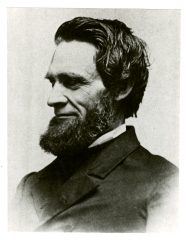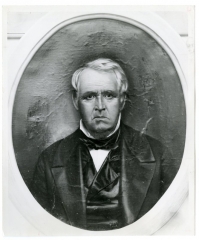Nye, active participants in the week’s proceedings, whose assistance was to prove most valuable for the Hamilton cause in the litigation to come. Mason was a justice of the Supreme Court and Nye, a member of the Class of 1832, the County Surrogate and Judge.
The faculty, except for Professors Eaton and Spear, was more than ever convinced that Rochester was the proper site. Dr. Kendrick’s death on September 11, 1848, was a severe blow for the Anti Removalists, but Dr. Eaton stood his ground, confident that legal obstacles would bar relocation. Professor Spear, who had tried to maintain a neutral position prior to the August meetings, in October seriously questioned the wisdom of the action taken by the Boards and the Society. He wrote to a Rochester friend, “Men assume a great responsibility to pluck an old institution like this, before they are sure they can plant it. Any man can pull down an Edifice but it takes an Architect to build one.”
He shrank from the prospect of protracted litigation and its attendant adverse effects on fundraising, patronage, and academic pursuits which were inevitable whether or not removal eventually succeeded. Rather than subject the University to these trials he urged the “western brethren”
to “strike for a New Institution.”
By January 1849, the Hamilton citizens were ready to initiate legal action. Confident of success in the courts, they abjured “all recriminative and acrimonious language”
toward the Rochester friends for whom, they stated, they cherished no ill-feeling. On the contrary, they would rejoice to see a university grace that city provided that Madison were left undisturbed.
A few weeks later Peter B. Havens and Thomas Wiley of Hamilton, with James W. Nye as their attorney, filed a complaint with the State Supreme Court, then in session at Morrisville, the county seat, asking for an injunction to prohibit the Trustees of the University and Education Society from acting. Though neither Havens nor Wiley was a Baptist, they considered themselves entitled to bring suit because they had been among the original subscribers to the $6,000 which Hamilton citizens had paid to the Education Society in 1823 on condition that the institution be located in the village. The plaintiffs had also contributed to funds for construction of buildings on the campus. Justice Philo Gridley, who had practiced law in Hamilton in the 1830’s and hence must have been familiar with many aspects of the case, granted them a temporary injunction on January 23, 1849.






